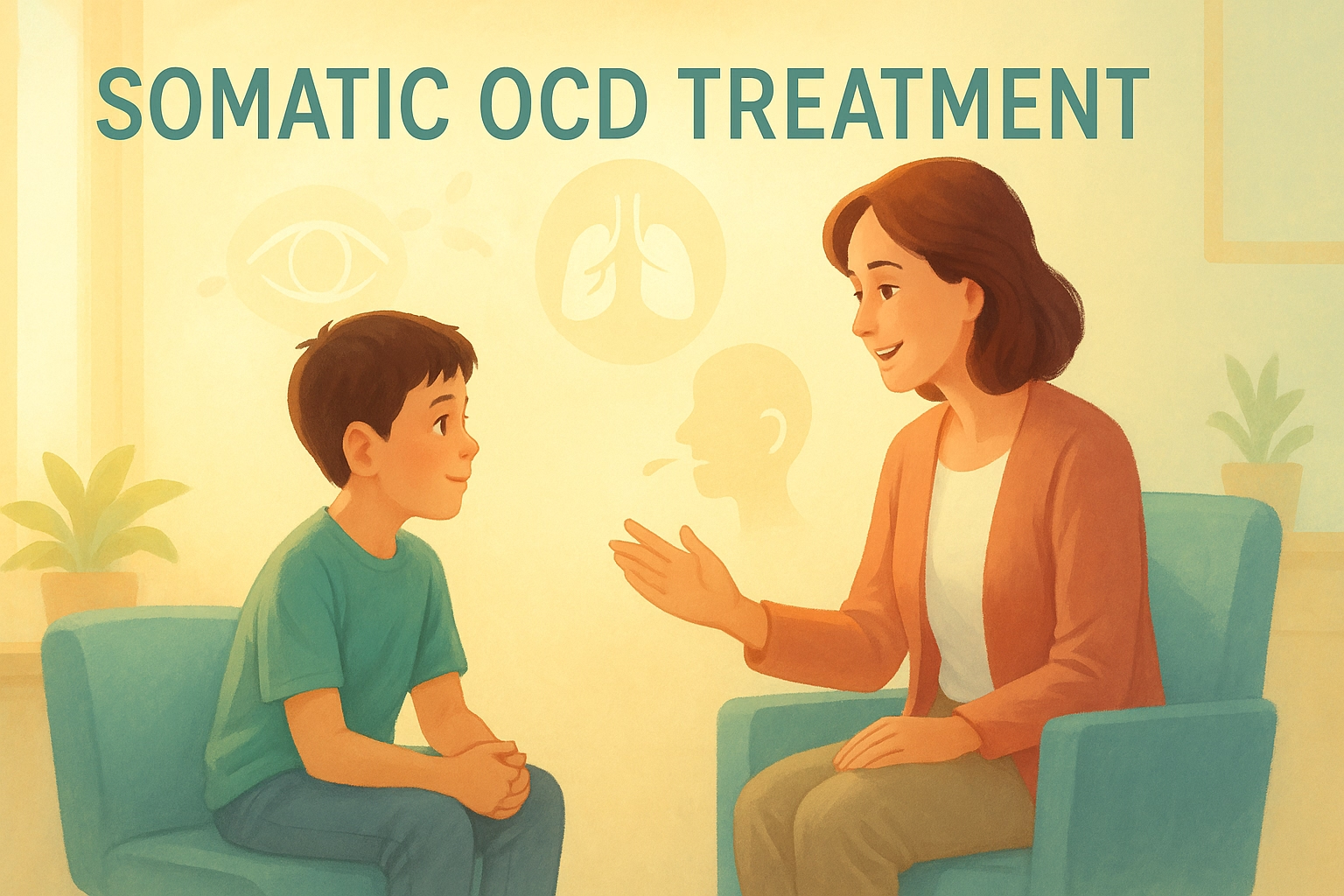Somatic OCD
Somatic OCD, most people don’t really notice how they breathe or blink it just happens in the background. But for people with Somatic OCD, these small, automatic actions suddenly become all they can think about. Something as simple as swallowing or breathing turns into something they can’t ignore. And the more they notice it, the more trapped they feel in their own body.
This experience is often part of a wider group of body-focused obsessions, where normal body sensations begin to feel unbearable. It means getting stuck on normal functions not because something is wrong with the body, but because the mind won’t stop monitoring them. For those seeking relief from somatic obsession OCD treatment without medicine, understanding the nature of the struggle is the first step.
Somatic OCD signs and symptoms
Somatic obsessions can show up in many ways. Some people experience:
- Every breath they take
- How often they blink
- How they swallow
- How their heart feels
- How they sit or move
Even though these actions are part of everyday life, they become overwhelming through hyperawareness of breathing, blinking, swallowing and heartbeat. It’s not a choice it feels automatic and impossible to turn off. People dealing with Hyperawareness OCD may find themselves constantly analysing or controlling these actions.
Many begin seeking help when over-focusing on sensations starts interfering with work, relationships, and peace of mind. It becomes a cycle where the more they notice, the harder it is to let go.
Emotional Struggles faced by an individual with Somatic Obsession OCD –
Living with this level of constant body scanning can be emotionally exhausting. People often feel:
- Drained from trying to stop the thoughts
- Frustrated that others don’t understand
- Afraid that the awareness will last forever
- Sad or anxious because life feels harder than it should
They may feel cut off from others or even start avoiding things they used to enjoy. When body-focused obsessions dominate daily life, seeking somatic OCD support becomes not just helpful, but essential. That’s why more people are looking for compassionate, medication-free paths.
Somatic OCD Affects in Life
Somatic OCD Affects in Life
When the body feels too loud to ignore everyday things gets harder. It can lead to disturbance in an individual’s Personal, Social, Emotional, professional life. Some examples are as follow:
- Distract from work or studies
- Disrupt conversations and not able to focus on anything
- Can make someone avoid quiet places.
- Making rest and relaxation feel impossible and due to that body always feels tired. (Even without doing anything or without performing any task).
Simple moments like watching a movie or sitting quietly can trigger intense hyperawareness of breathing, blinking, swallowing and heartbeat, making ordinary tasks feel overwhelming. Treatment approaches that address Somatic OCD gently, without pressure or medication, can help people find peace again.
Causes of Somatic OCD
- Anxiety and Difficulty Coping with Uncertainty: When someone becomes aware of natural bodily functions, they may start feeling anxious, especially if they fear losing control or being stuck with that awareness.
- Perfectionism and Control-Seeking Tendencies: A strong desire for internal comfort or for things to feel “just right” can result in ongoing monitoring and checking of body-related sensations.
- Emotional Stress or Life Transitions: Somatic OCD may develop during challenging life periods such as emotional stress, illness, or significant changes or Trauma that increase one’s sensitivity and focus.
- Repeated behaviours like avoiding triggers, seeking reassurance, can unintentionally increase the intensity and frequency of obsessive focus.
Tarun’s Story
Tarun’s Story
Tarun was in college when he became aware of his breathing. At first, he assumed it would pass. But soon, every breath felt like a task. He found himself practicing constant body scanning, trying to “fix” how he was breathing.
He couldn’t sleep well, struggled in class, and avoided spending time with friends. His world shrank to just his breath.
With therapy, Tarun learned to stop fighting the sensation. Instead of reacting with fear, he began to observe without panic. Over time, his story became one of resilience showing that even intense body-focused obsessions can ease with the right support. His experience reflects the value of somatic OCD treatment without medication that focuses on mindset and response.
Dr. Vasin India Somato Form OCD Recovery Success Story –
Dr Vasin is a MBBS Graduate when he was 2nd year student in his college that time, he is focusing all other illness symptoms and signs within himself. At the starting of his 3rd year, he started doing all the scans like blood test, X-RAY, CT scan, Bp Monitoring, Urine Test etc this used to happen very frequently on a daily basis throughout the college year. Dr Vasin started taking medicine, but it didn’t help at all and his day-to-day life functioning (Social, Academic suffered a…
The Cycle of Somatic OCD that Keeps It Going
These obsessions often follow a loop:
- The mind labels the sensation as a problem.
- The person reacts by trying to suppress it.
- The attention grows stronger.
- Anxiety increases, reinforcing the loop.
For people with Hyperawareness OCD, this loop becomes harder to break the more they fight it. Over-focusing on sensations leads to a stronger sense of discomfort. Effective treatment focuses on changing how the person responds to the awareness.
Treatment for Somatic OCD
Cognitive Behaviour Therapy (CBT) is a key approach in supporting people with Somatic OCD. It doesn’t try to eliminate the sensations instead; it helps people shift their relationship with them. CBT can include:
- Learning how attention works
- Exploring thoughts like “What if I can’t stop noticing this?”
- Facing sensations gently instead of avoiding them
- Building the skill to return focus to meaningful areas of life
Many individuals with Somatic OCD and body-focused obsessions find that CBT allows them to create distance from the sensation without needing to suppress it. Over time, their response changes they stop fearing the awareness and start accepting it without judgment.
At Emotion of Life, the approach includes these principles. The program supports people through constant body scanning, intrusive thoughts, and overwhelming sensations not by distraction or suppression, but by guiding them to respond with kindness and clarity.
Conclusion – A Kind Way Forward
Living with Somatic OCD or any form of hyperawareness of breathing, blinking, swallowing and heartbeat can feel incredibly isolating.
These sensations may feel loud now, but they don’t have to rule your life forever. Through awareness, support, and gentle practice, even intense body-focused obsessions can become less powerful.
For those wanting to explore somatic OCD treatment without medication, there are paths grounded in compassion, understanding, and practical change. You’re allowed to take your time. You’re allowed to find peace again one step at a time. Let’s work together and to live a life without OCD, OCD recovery is 100% Possible.


